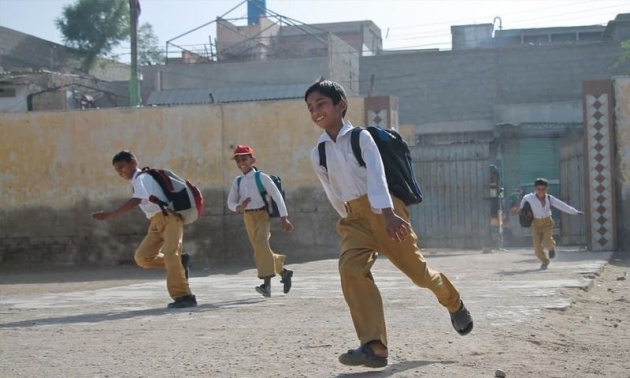The Jamat-i-Islami (JI) has expressed disapproval over the provincial government’s preference for shirts and trousers as school uniforms in Khyber Pakhtunkhwa over shalwar kameez.
They claim that the Pakistan Tehreek-i-Insaf (PTI) has violated an agreement by not consulting with them about the move.
I do believe that all lawful agreements between political parties must be honoured for a functioning and efficient democracy, however, the JI’s claim is simply frivolous and polarising.
Using the uniform as a reason to claim that the education system is being 'Americanised' and 'imperialistic', the Jamat-i-islami is resorting to an age-old and banal trick – blame it all on Western conspiracy, call it an American agenda and create rifts among the society.
Also read: JI threatens agitation against change in school uniform
Take an issue that will instantly grab attention, retain focus on form, not substance, make it emotional, connect with the moral baggage that has plagued society since the infamous Zia era, when the state established dress codes on TV and tried to intimidate women into wearing chadors (large pieces of cloth used to cover up).
While a chador is a fine form of dress – the critical matter is choice, and that was being undermined by a repressive state instituting discriminatory policies and laws.
This repressive dress culture and its effects on society run deep.
Ironically, while imposing non-western dress codes at home, Zia’s military regime trained Mujahidin at the behest and funding of the US to fight the Soviets in Afghanistan. That military economy has since evolved, but we largely remain indebted to the United States for military aid.
Over the two decades of the 1980s and the 1990s, immense public shame and stigma was associated with clothing.
There has been a retreat in the late 1990s and the 2000s from that stigma, and newer generations' awareness of the pressure that comes with the state’s peculiar obsession with its citizens' garb is perhaps more subliminal than real. The scars remain.
This culture of intolerance towards diversity and the disgrace associated with behaviour and dress have proved rather resilient in Pakistan.
How about nutrition instead?
The JI provincial chief, Mushtaq Ahmad, said that the sense of deprivation and inferiority that prevails among people of the province cannot be removed by a mere change of uniforms.
If the JI are really serious about countering this sense of deprivation and inferiority within the people, then they must focus on developing economic policies that will bring about serious change.
Instead of putting clothes under the microscope, making it a personal issue and exacerbating peoples’ shame, introduce school lunches that could act as an incentive for parents to send their children to government schools.
They should build young people's appetites and confidence, address malnutrition among children whose parents are struggling to cope with the rising cost of food and the absence of state welfare; they should address the issue of dysfunctional schools without any basic facilities, like furniture .
Also read: Unicef upset over growing child malnourishment
By bringing clothing under the spotlight, the Jamat-i-Islami is perpetuating prejudice; their claims are hollow. There are plenty of state officials who wear trousers and shirts as uniform.
We are tired of this trick and we deserve better.
 Maybe, so better make sure it's not steak and potatoes.v-v=c-v==vvvvvvvvvvvvvvvvvvvv
Maybe, so better make sure it's not steak and potatoes.v-v=c-v==vvvvvvvvvvvvvvvvvvvv




